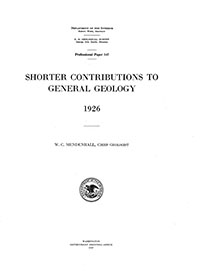Aside from its value as an aid in determining the age of Tertiary beds, the chief interest of the genus Clementia lies in the anomalous features of its present
and former distribution. An attempt is made in this paper to trace its geologic history, to point out its paleobiologic significance, and to describe all the known American Tertiary species. The fossils from Colombia used in preparing this report were collected during explorations made under the direction of Dr. 0. B. Hopkins, chief geologist of the Imperial Oil Co. (Ltd.), who kindly donated them to the United States National Museum. Dr. T. Wayland Vaughan, of the Scripps Institution of Oceanography, furnished information relating to specimens collected by him in Mexico. Dr. Bruce L. Clark, of the University of California; Dr. G. Dallas Hanna, of the California Academy of Sciences; Dr. H. A. Pilsbry, of the Philadelphia Academy of Natural Sciences; and Dr. W. D. Matthew, of the American Museum of Natural History, generously loaned type specimens and other material. Doctor Clark and Doctor Hanna also gave information concerning the Tertiary species from California. Mr. Ralph B. Stewart, of the University of California, read the manuscript, and I have taken advantage of his suggestions. I am also indebted to Mr. L. R. Cox, of the British Museum, for information relating to the fossil species from Persia, Zanzibar, and Burma, and to Dr. Axel A. Olsson, of the International Petroleum Co., for data concerning undescribed Tertiary species from Peru.


